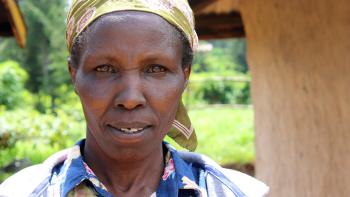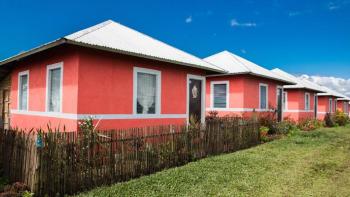
What is microfinance?
Three billion people – nearly half the world’s population – live on less than US$2.50 a day. Only about 20 percent of households in developing countries have access to the formal financial sector and many of the rest lack access to credit, savings and mortgages.
In most of the countries where Habitat for Humanity works, fewer than 10 percent of households have access to mortgages. However, in simply providing more availability to knowledge and resources, there are many individuals who are able to accelerate their own process of building a better future.
Acting as a market facilitator, Habitat can increase its impact by working to improve access to affordable housing products and services for low-income families who mostly build their homes in stages. Market development stays true to Habitat’s original principles of self-help and sustainability.
What is microfinance?
Microfinance loans have relatively short repayment periods, small loan amounts and little or no collateral required. They may be provided by a bank, non-bank financial institution, cooperative, non-government organization or other legal-regulated entities.
What is housing microfinance?
Like traditional microfinance, housing microfinance has the ability to drastically improve the living conditions of low-income families around the world. Housing microfinance consists of small, non-mortgage backed loans starting at just a few hundred dollars that can be offered to low-income populations in support of incremental building practices.
What is incremental building?
Building a home in progressive — or incremental — stages is a common practice in much of the developing world, constituting 50 to 90 percent of residential construction. By slowly saving money under mattresses or in jars, people collect building materials to gradually expand and improve their homes. Improvements can mean adding a concrete or tile floor, shoring up the roof, improving the kitchen or supplementing living space when welcoming a new child to the family.
How can housing microfinance make a difference?
Efforts to provide new housing in the developing world are limited, and existing bankers and lenders rarely serve lower-income people. Housing microfinance, bundled with housing support services and technical assistance, has the ability to increase access to safer, healthier and less impoverished living conditions and can help speed up the construction of adequate housing.
Habitat’s role in microfinance institution partnerships
Habitat does not issue microfinance loans itself, but collaborates with partner microfinance institutions through its MicroBuild Fund.
Other services that Habitat is involved in include:
- Program design assistance: Assists in establishing a housing loan product.
- Technical assistance: Assists in construction services. Helps link families or clients financed by a microfinance institute to government land, infrastructure or subsidy provided by a Habitat national program.
- Direct investing: Transfers grants for research or loans for product rollout to microfinance institutes.
- Investment brokering: Involved in negotiations that encourage public and private investment in microfinance institutes to expand housing finance.
- Credit service outsourcing: Extends loans that are managed by microfinance institutes to serve Habitat partner families, clients and beneficiaries.


